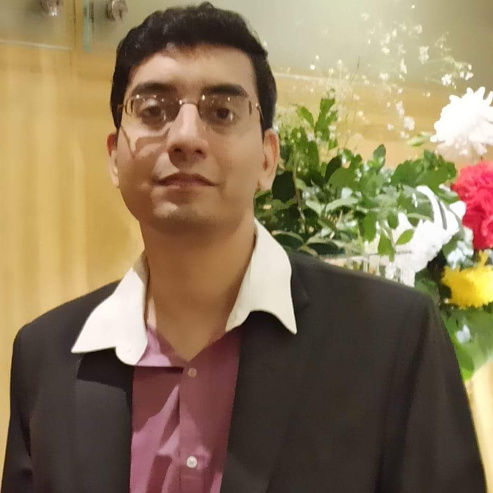What Causes Back Pain?
Discover the common causes of back pain, from poor posture and muscle strain to underlying medical conditions. Learn how to prevent and manage back pain effectively.

Written by
Last updated on 3rd Jul, 2025
Introduction
Back pain often indicates a strain, sprain, spinal disorder, or a condition affecting organs in the pelvis or abdomen. The pain can vary in intensity, from mild discomfort to severe pain, and may radiate to your legs or other areas. A healthcare provider can help determine the underlying cause of your back pain and suggest appropriate treatments to provide relief. In this blog, we will learn about back pain and its causes.
Anatomy of the Back
The back's anatomy consists of various structures working together to support your body. Issues with any of these components can lead to back pain.
1. Four Regions of the Spine:
There are four regions of spine and they are as follows:
Cervical Spine
Thoracic Spine
Lumbar Spine
Sacrum and Coccyx
2. Key Parts of the Spine and Back:
Key parts of spine and back includes:
Vertebrae: Small, stacked bones that protect the spinal cord.
Spinal Cord: A long bundle of nerves running through a canal in the vertebrae.
Intervertebral Discs: Cushion-like pads between vertebrae that act as shock absorbers and spacers.
Ligaments: Tough, flexible bands that hold the vertebrae in place.
Tendons: Tissue cords connecting muscles to bones.
Muscles: Dynamic fibres that support the spine and upper body, enabling movement.
Common Causes of Back Pain
Back pain often occurs without an identifiable cause visible in imaging studies or tests. However, several conditions are commonly associated with back pain and they are as follows:
Muscle or Ligament Strain: Repeated heavy lifting or sudden, awkward movements can strain back muscles and ligaments. Individuals with poor physical fitness may experience painful muscle spasms from ongoing strain.
Bulging or Ruptured Discs: Disks serve as cushions between spinal bones. When the soft material inside a disk bulges or ruptures, it can press on a nerve, potentially causing pain. However, not all bulging or ruptured discs result in back pain. Disk issues are often discovered incidentally during spine X-rays, CT scans, or MRIs conducted for other reasons.
Arthritis: Osteoarthritis can impact the lower back. In some cases, arthritis in the spine leads to spinal stenosis, a condition where the space around the spinal cord narrows.
Osteoporosis: When bones become porous and brittle, the vertebrae in the spine can develop painful fractures.
Ankylosing Spondylitis (Axial Spondyloarthritis): This inflammatory disease can cause spinal bones to fuse, reducing flexibility and leading to discomfort.
Lifestyle Factors Contributing to Back Pain
While many factors can cause back pain, certain lifestyle choices play a significant role and are easily modifiable. Addressing these factors can help improve spinal health and lead to a healthier life overall. Some of the most common factors are as follows:
Sedentary Lifestyle: A lack of physical activity can weaken muscles and negatively affect posture, putting strain on your spine over time. This can result in chronic back pain.
Poor Posture: Slouching at your desk, walking with a hunched back, looking down at your phone, or lifting objects improperly can harm spinal alignment over time.
Obesity: Excess weight places extra stress on your joints and spine, leading to persistent back pain.
Poor Diet: Unhealthy eating habits can contribute to inflammation, obesity, and poor bone health, all of which exacerbate back pain.
Smoking: Smoking reduces blood circulation, oxygen delivery, and calcium absorption, all of which weaken bones and muscles, increasing the risk of back pain.
Stress: Chronic stress and anxiety cause muscle tension, which can tighten muscles in the back and lead to pain. Poor posture caused by stress further exacerbates this.
Poor Sleeping Habits: Irregular sleep patterns, insufficient sleep, or sleeping in an incorrect position can strain your back and hinder recovery from existing pain.
Medical Conditions Leading to Back Pain
Several medical conditions can contribute to back pain. Here's an overview of common causes:
Arthritis: Different types of arthritis, such as osteoarthritis and ankylosing spondylitis, can affect the spine. Symptoms include lower back pain and stiffness, often accompanied by additional issues specific to the type of arthritis.
Degenerative Disc Disease: This condition causes pain in the lower back, which may radiate to the arms, legs, or buttocks. The pain can be intermittent or worsen with specific movements like bending or twisting.
Fractured Spine: Spinal fractures caused by sudden injuries lead to intense, sharp back pain. The pain may worsen with movement, such as walking or bending.
Herniated Disc: A herniated disc can press on nearby nerves, causing lower back pain and sharp, shooting pain down one side of the buttocks and leg (sciatica). In severe cases, it can result in cauda equina syndrome, a medical emergency.
Myofascial Pain Syndrome: This chronic condition is marked by aching, throbbing, or vice-like pain, along with trigger points, weak muscles, and other symptoms.
Sacroiliitis: Inflammation in the sacroiliac joints results in lower back pain that may spread to the buttocks, hips, or thighs.
Scoliosis: An abnormal curvature of the spine, scoliosis can lead to back pain in severe cases. It may also cause difficulty standing upright, leg pain, numbness, or weakness.
Spinal Stenosis: Narrowing of the spinal canal, especially in the lumbar spine, leads to "pinched nerves," causing lower back pain, sciatica, heaviness in the legs, and worsening pain with prolonged standing or walking.
Spondylolisthesis: This condition involves vertebrae slipping out of place, leading to lower back pain, muscle spasms in the back of the thigh, pain when bending over, and difficulty standing or walking for long periods.
Spondylosis: A type of spinal degeneration, spondylosis primarily causes lower back pain that may radiate to the thighs and buttocks. The pain intensifies with movement and improves with rest.
Diagnostic Approaches for Back Pain
The diagnostic approaches for back pain are as follows:
1. Physical Examination
A healthcare provider will conduct a physical examination and ask questions about your back pain, such as its characteristics, triggers, and factors that alleviate or worsen it. They will also review your medical history and discuss your daily physical activities to better understand the condition.
2. Diagnostic Tests
Common diagnostic tests include:
Imaging studies: X-rays, MRIs (magnetic resonance imaging), or CT scans (computed tomography scans) to assess the spine and surrounding structures.
Electromyography (EMG): To evaluate nerve and muscle function.
Blood tests: To identify potential underlying conditions or infections.
Find Out Why You Get Back Pain
Treatment Options
Treatment options for back pain are as follows:
1. Therapies
There are different types of therapies for back pain and they are as follows:
Physical Therapy: Tailored exercises and techniques to strengthen the back and improve mobility.
Integrative Medicine: Includes acupuncture, chiropractic adjustments, massage therapy, or yoga therapy to alleviate pain and improve function.
Osteopathic Manipulation: Hands-on techniques to reduce pain and restore movement.
Transcutaneous Electrical Nerve Stimulation (TENS): A pain-relief therapy using low-voltage electrical currents.
Cognitive Behavioral Therapy (CBT): Helps manage chronic or severe pain by addressing mental and emotional responses to discomfort.
2. Medications
Types of medications for back pain are as follows:
Injections: Options like epidural steroid injections (ESI) or nerve blocks to provide targeted pain relief.
Muscle Relaxers: Medications such as cyclobenzaprine, metaxalone, or methocarbamol (to be used under close medical supervision due to potential addiction risks).
Acetaminophen: Over-the-counter pain reliever for mild to moderate pain.
Nonsteroidal Anti-inflammatory Drugs (NSAIDs): Medications like ibuprofen to reduce inflammation and pain.
Prescription Pain Relievers: Includes medications like duloxetine for chronic pain (opioids are rarely prescribed and only as a last resort due to their high addiction potential).
3. Surgery
Types of surgery for back pain are as follows:
Minimally Invasive Spine Surgery: To address specific causes of back pain.
Corrective Surgery: For underlying conditions contributing to chronic or severe back pain.
Conclusion
Back pain is a common issue that can arise from various causes, including lifestyle factors, medical conditions, and physical strain. Understanding the anatomy of the back, recognizing contributing factors, and seeking timely diagnosis are crucial steps in managing and alleviating back pain. With a range of treatment options from therapies and medications to minimally invasive surgeries, effective relief is achievable. By addressing underlying causes and making proactive lifestyle changes, you can maintain a healthier spine and improve your overall quality of life.
Consult Top Orthopaedicians
Consult Top Orthopaedicians

Dr. Manoj Dinkar
Orthopaedician
15 Years • MBBS, Dip (Orthopaedics)
New Delhi
THE DOCTORS NESST, New Delhi
Dr. Girimahesh Yadav
Orthopaedician
14 Years • MBBS, DNB Orthopedics
Nellore
ENEL Hospitals, Nellore
Dr. Sakthi Annamalai Chandranath
Orthopaedician
9 Years • MBBS., D.ortho.,
Madurai
A.C.Hospital, Madurai

Dr. Anindya Dutt
Orthopaedician
7 Years • MBBS, DNB (Orthopaedics), Fellowship in Joint Replacement, Fellowship in Paediatric Orthopaedics
Kolkata
Dr Anindya Dutt's Clinic, Kolkata

Dr. Pradeep Lucas
Orthopaedician
7 Years • MBBS, Diploma in Orthopaedics, Fellowship in DFSI
Bengaluru
Revival Multispeciality Clinic, Bengaluru

